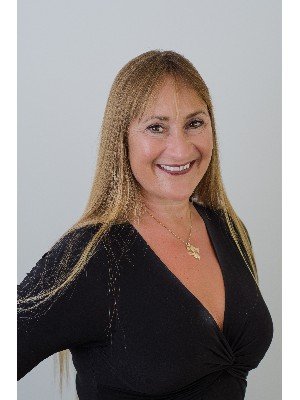Sayward Real Estate Market 2025 – Slow Sales, High Prices, and a World of Potential
Special thanks to real estate agent Susan Mallinson for contributing information relevant to this article.
Sayward, BC—tucked between lush rainforest and the rugged Johnstone Strait—offers one of Vancouver Island’s most distinctive real estate markets. While many Island communities have seen rapid growth and quick sales, Sayward remains a market defined by patience, long listing times, and changing post-pandemic expectations.
Current Market Overview: 21 Listings Across the Village and Valley
As of late 2025, there are 21 active properties for sale in Sayward, spanning everything from small village lots to expansive valley acreages and commercial sites.
Property breakdown:
-
2 vacant lots in the village
-
6 condos
-
5 single-family homes in the village
-
1 mobile home
-
1 tri-plex
-
3 homes on acreage in the valley
-
1 large raw acreage
-
Commercial listings: Home & Campground at Kelsey Bay and Sayward Valley Resort
Price range: From $59,000 to $3.9 million.
“Sayward living is not for everyone,” says longtime local real estate professional, Susan Mallinson. “Only during the COVID years did homes sell fast—and that’s when prices spiked.”
Homes That Take Years to Sell
Unlike the fast-paced markets of Campbell River or Courtenay, properties in Sayward often take two to three years to sell.
Typical village homes now list in the mid-$400,000 range, with a few exceeding $500,000, though many have been on the market for months or even years. During the pandemic, those same homes sold for about $100,000 more—a reflection of the once red-hot Vancouver Island housing market that has since cooled.
Why Many Sellers Are Still Overpriced
Many sellers in Sayward are struggling to adjust to today’s realities.
“It’s hard to convince sellers that those days are over,” says Mallinson. “Buyers aren’t paying peak prices anymore.”
Overpricing has led to fewer showings and longer listings. When offers do come in—often below asking—some sellers feel insulted or refuse to negotiate.
Complicating matters, many Sayward homes need major updates. Deferred maintenance, older systems, or unfinished renovations can discourage buyers who aren’t willing to invest additional time and money.
The Rural Reality: Why Buyers Hesitate
Selling a home in Sayward is very different from selling one in Campbell River or the Comox Valley. The area’s isolation is both its charm and its biggest obstacle.
Common reasons buyers hesitate include:
-
Long commute to Campbell River and no cell service along the highway
-
Winter driving conditions that limit accessibility
-
Few local amenities and hour-long school bus rides for children
-
Limited youth activities or sports programs
While Sayward appeals to those seeking space and tranquility, the lack of urban conveniences often tips the balance for many would-be buyers.
Rising Rates and Financial Pressure
The sharp rise in interest rates since the pandemic continues to pressure both buyers and sellers. Homeowners who locked in at 2% interest are now facing renewals at 5–6%, effectively doubling their monthly payments.
First-time buyers face their own hurdles:
“They might pay $3,000 in rent,” says Mallinson, “but they can’t get a mortgage without the 5% down payment. The upfront cost is the hardest part.”
The result is a domino effect—buyers can’t purchase until their own homes sell, creating a stagnant cycle across rural Vancouver Island.
Government Policy: Falling Short on Affordability
Despite the national focus on housing affordability, rural BC communities like Sayward see little relief.
“Wages haven’t kept up with inflation,” Mallinson explains. “Costs keep climbing, and government programs don’t go far enough.”
While the Property Transfer Tax exemption helps first-time buyers, it only applies below certain price points—excluding most Vancouver Island real estate.
Even once-affordable towns like Port Hardy and Port McNeill have seen prices soar five to six times higher since before COVID, reflecting the Island’s transformation into a global lifestyle and tourism destination.
Tips for Sellers: Maintenance = Market Value
If you want top dollar in a slow market, the formula is simple: maintain, repair, and update.
“Buyers don’t want to inherit someone else’s deferred maintenance,” says Mallinson. “Well-kept properties always earn better offers.”
Fresh paint, clean landscaping, updated fixtures, and basic repairs can dramatically improve your home’s appeal—even in slower markets like Sayward.
The Outlook: Patience Pays in Sayward
Sayward’s real estate market is not for those seeking quick results. Each transaction unfolds differently, shaped by lifestyle factors, price sensitivity, and property condition.
Still, there’s opportunity for both buyers and sellers:
-
Buyers can find unique properties at lower price points than elsewhere on Vancouver Island.
-
Sellers who price competitively and present their homes well can still find success—eventually.
As Mallinson sums up:
“Every home tells a different story. You just have to give Sayward time.”
Sayward Real Estate Quick Facts
-
21 active listings (village & valley combined)
-
Price range: $59,000 – $3.9M
-
Average listing time: 2–3 years
-
Prices peaked during COVID, now stabilizing
-
Maintenance and realistic pricing are key to selling










